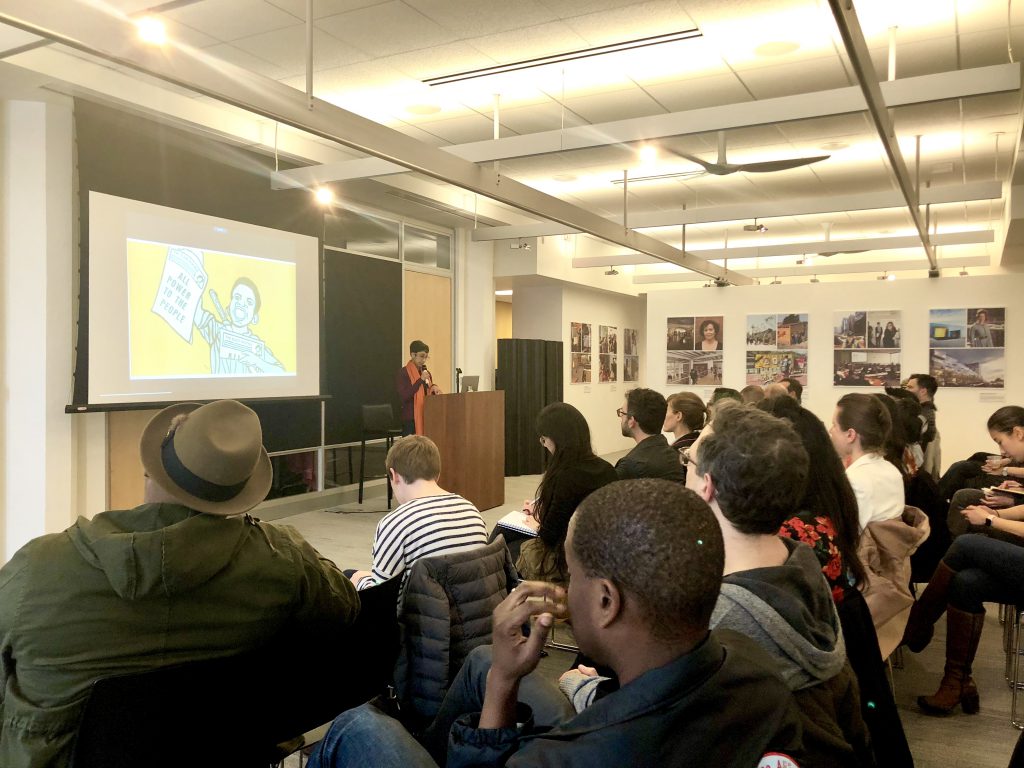The other night we were joined by Sabiha Basrai from Design Action Collective, a worker-owned design cooperative in Oakland. Formed in 2002, Design Action branched from Inkworks Press, a printer co-op that began in 1974 to serve activists and progressive organizations in the Bay Area. Though Design Action has developed to include more modern technologies of graphic design and web development, their work continues to serve social movements such as Justa :: Just Cause, Black Lives Matter and Bay Resistance.

Though they’re embedded in a long tradition of activist art and design, they’ve updated their methods and staffing to help amplify the voices of activist and organizers who have to compete in the same arena as multinational corporations to tell their own narratives. In this way, they bridge the local to the virtual; creating images and logos that people from around the globe or around the neighborhood can rally behind.
Solidarity is central to their methodology, and everyone who is a part of Design Action Collective is both in the office working to create images that spread messages of solidarity and social justice, as well as in the streets, speaking it. Sometimes it’s not choosing the designer who is technically the best, but those who are continuously standing up for what they believe in.

Here are a few of our key takeaways.

